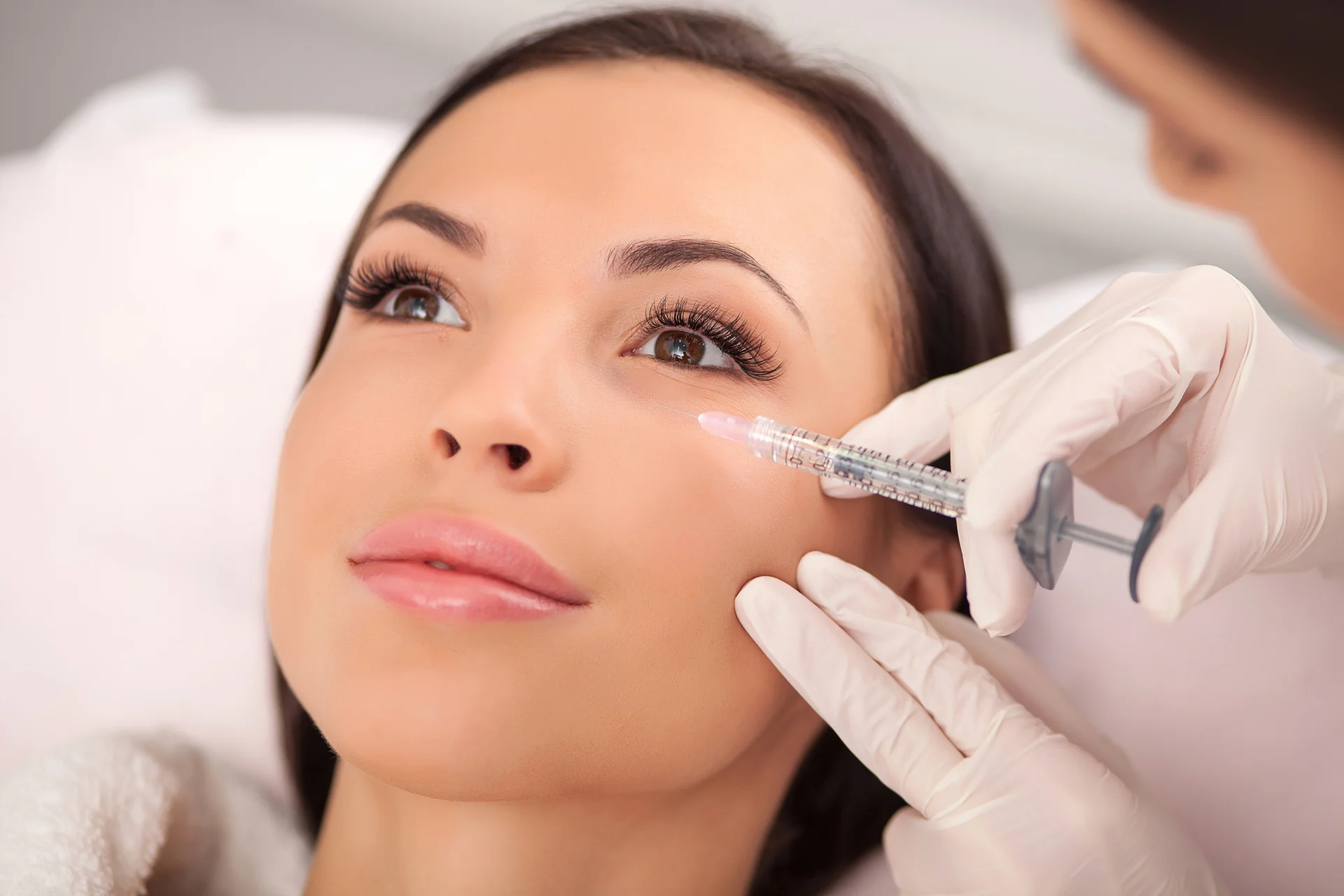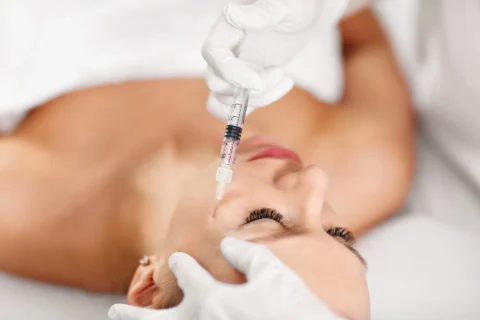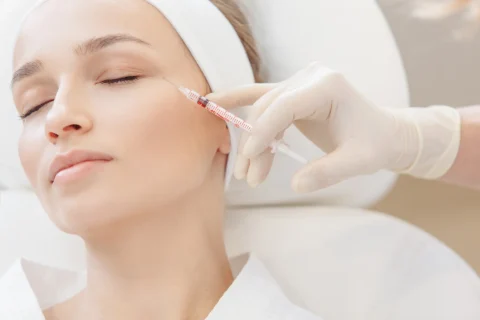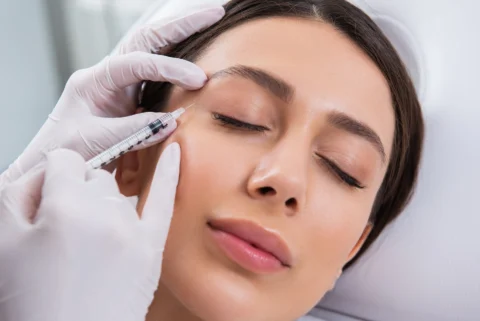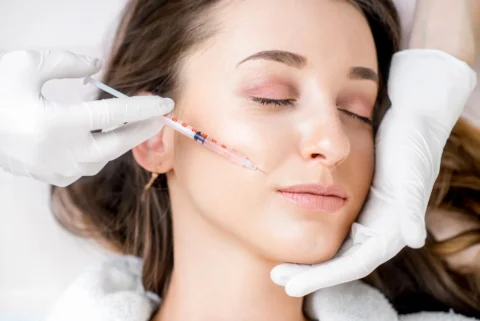Comprehensive Insights on Dermal Filler Placement
Dermal filler injection sites on the face restore volume and smooth wrinkles, including cheeks, lips, and under-eye areas. They’re chosen based on aesthetic goals and facial anatomy for rejuvenation.
Dermal Fillers Types and Purposes
Dermal fillers have revolutionized anti-aging and facial aesthetics, offering a non-surgical option to diminish aging signs or enhance facial features.
Not all fillers are equal, understanding the nuances can help you make the best choices for your needs.
What are Dermal Fillers?
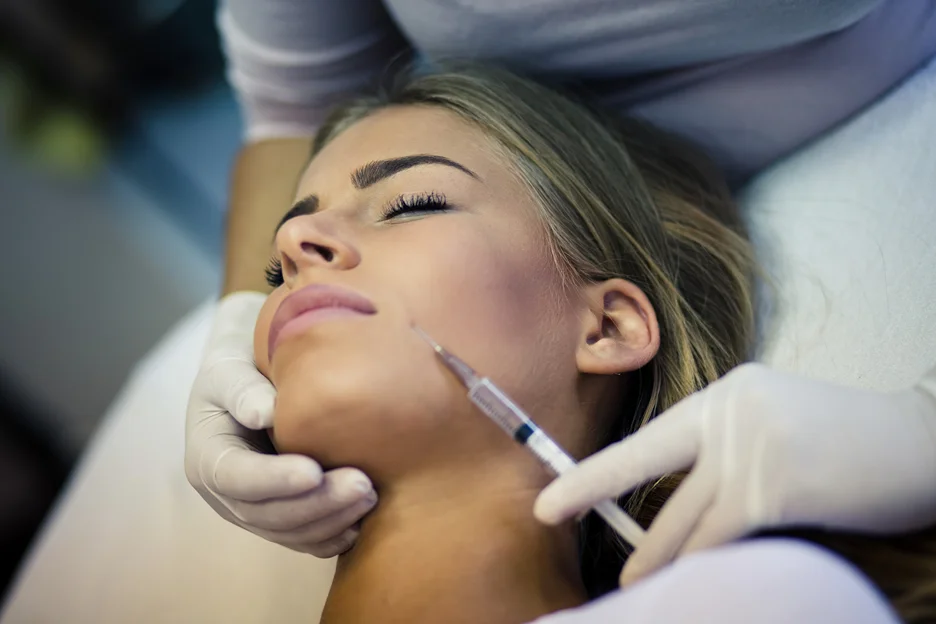
Dermal fillers are substances injected beneath the skin to restore lost volume, smooth lines, soften creases, or enhance facial contours.
The most common fillers are based on hyaluronic acid, a substance naturally found in the skin that retains moisture and keeps the skin hydrated and plump. Other types include calcium hydroxylapatite, poly-L-lactic acid, and polymethylmethacrylate beads, each with specific purposes and longevity.
Their primary use is to reverse aging changes or enhance facial features for a balanced or vibrant appearance.
Temporary Fillers vs. Semi-Permanent Fillers
Understanding the difference between temporary and semi-permanent fillers is crucial. Temporary fillers, like hyaluronic acid-based ones, can last 6 to 18 months before being absorbed by the body.
Semi-permanent fillers are made of materials that take longer to break down and can last several years. The results’ longevity depends on the filler type, treated area, and individual factors like metabolism and lifestyle.
When choosing a filler, consider these factors, your goals, and preferences. Have a discussion with a board-certified dermatologist or plastic surgeon to recommend the most suitable filler for your needs.
Dermal fillers are a good choice for immediate results with minimal recovery time. However, the decision between temporary and semi-permanent options should consider aging and changing aesthetic preferences.
A skilled injector will guide you to the best filler for each facial area you want to enhance for natural and satisfying results.
Less Common, But Viable Injection Sites
While the mentioned injection sites are the most treated, dermal fillers can be used in other areas of the face and body to address various concerns. Here are some less common sites for fillers:
Nose (Non-Surgical Rhinoplasty)
Dermal fillers are a non-surgical alternative to traditional rhinoplasty, used to smooth out nose bumps, lift the tip, or improve symmetry. This procedure requires precision and knowledge of nasal anatomy, so a skilled injector is essential.
The benefits are significant, but there are risks, such as vascular complications, making the choice of a qualified professional critical.
Hands
Volume loss in the back of the hands can reveal signs of aging, like prominent veins and tendons. Fillers can restore a youthful plumpness to the skin, making these signs less noticeable.
The hand rejuvenation procedure involves placing the filler beneath the skin for a smooth, even result without interfering with hand movement.
Other Potential Areas
Dermal fillers can address concerns in areas like the sagging or elongation of earlobes, affecting how earrings sit, and certain types of acne scars, providing a smoother skin surface.
These less common treatments can make a significant difference for individuals with these specific concerns.
Each area requires a unique approach, and the choice of filler will depend on the treatment goals and area characteristics. Dermal fillers offer possibilities, whether refining the nose shape without surgery or rejuvenating the hands’ appearance.
What to Expect During a Dermal Filler Procedure
Deciding on dermal fillers is just the start. Knowing the process from start to finish can help set realistic expectations and prepare you for a smooth experience. Let’s walk through the typical journey of a dermal filler procedure:
Consultation
The first step is a thorough consultation with your provider. You’ll discuss your aesthetic goals, medical history, and treatment options.
It’s important to feel heard and for your provider to set realistic expectations about what fillers can do. You’ll also discuss potential risks and the procedure tailored to your needs.
Procedure Itself
On the day of the procedure, the provider will cleanse the treatment area and apply a numbing cream. Then, they’ll use a fine needle or cannula to inject the filler. The choice depends on the treatment site and the provider’s technique. While not usually painful, you may feel a pinch or pressure. The process takes 15 to 60 minutes, depending on the areas treated.
Aftercare
After the injections, you may have mild swelling, redness, or bruising at the injection sites. These are temporary and should resolve within a few days to a week.
Your provider will give you aftercare instructions, which may include avoiding strenuous exercise, heat exposure, and massaging the treated areas. Following these guidelines will help ensure the best outcome and reduce complications.
Results are immediate, but it can take up to two weeks to see the full effect of the filler as swelling subsides. Be patient as your body adjusts to the new contours and volume.
Importance of Choosing a Skilled Injector
The injector’s expertise is crucial for desired results with dermal fillers. Let’s discuss the importance of selecting someone technically skilled and artistically adept.
Emphasize Experience
A skilled injector understands facial anatomy, fillers, and safe injection techniques. Experience matters for a track record of successful procedures, handling different facial structures and patient expectations, and managing potential complications for patient safety.
Communication and Comfort
A good injector should communicate clearly and make you feel comfortable, beyond their technical ability. They should listen to your concerns, answer your questions, and collaborate to create a personalized treatment plan.
The right provider will set realistic expectations and ensure you understand the potential benefits and limitations of dermal fillers.
Final Notes: Realistic Expectations

As we wrap up, let’s reiterate the importance of having realistic expectations and understanding dermal filler treatments.
Results and Longevity
Dermal fillers offer impressive results with immediate improvement, but they are not permanent. They will be metabolized by the body, so future touch-ups are necessary. The longevity varies depending on the type used, the treated area, and individual factors like metabolism and lifestyle.
Personalized Treatment
What works for one person may not work for another. Each face is unique, and responses to fillers can vary. A tailored treatment approach is essential for natural and harmonious results. It’s important to communicate with your injector about your evolving aesthetic goals.
Dermal fillers can transform aging concerns and enhance the face. Success depends on informed decision-making, skilled application, and realistic expectations. With this guide, you’re better equipped for your facial rejuvenation journey. The goal is to enhance your natural beauty, not to alter who you are. Embrace subtle refinement and revel in confidence.
FAQ on Dermal Filler Injection Sites
What are the injection areas for dermal fillers?
Dermal fillers can be injected into various areas of the face and body to enhance volume, contour, and reduce the appearance of wrinkles.
Common injection areas include the lips, cheeks, chin, jawline, temples, nasolabial folds, under eye area, hands, chest, scars, glabellar region, temporal fossa, infraorbital region, perioral region, nasal area, and for diminishing acne scarring.
Where should filler not be injected?
Areas to avoid when injecting fillers include the supraorbital and supratrochlear arteries in the forehead, infraorbital foramen, mental foramen, facial artery along the jawline, deep temporal arteries, medial canthus, nasal alar groove, anterior medial length of the ear, and temporal fossa to prevent vascular occlusion and other complications.
Where do dermal fillers work best?
Dermal fillers enhance volume and contour with minimal complications. They work well in the lips for volume and definition, cheeks for youthful contours, nasolabial folds for midface softening, tear troughs for eye rejuvenation, chin and jawline for improved profiles, and nose reshaping without surgery.
Fillers also work well in the hands to minimize vein and wrinkle appearance, and in scar treatment to reduce visibility.
How deep do you inject dermal filler?
The depth of dermal filler injections depends on the treatment area and filler type. Smaller molecule fillers treat fine lines and lip lines, while larger molecule fillers are injected deeper for areas needing more support, like the cheeks, jawline, and chin.
Injections should provide the desired effect without risking blood vessels or other structures. Cheek fillers are injected one fingerbreadth above the zygomatic arch, and practitioners should stay deep, injecting down to the bone or periosteum to avoid complications like the Tyndall effect.

